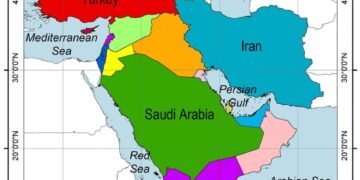Toronto and its surrounding region have officially surpassed a population of seven million, with nearly 300,000 new residents moving there in just the past year.
A report released by Statistics Canada on Thursday revealed that the population of the Toronto Census Metropolitan Area (CMA) exceeded 7.1 million as of July, representing a nearly four per cent increase from the previous year when the population was approximately 6.8 million.
Toronto’s population growth outpaced both the national average (three per cent) and the rate of growth among other CMAs (3.5 per cent).
Here’s what you need to know about the data:
The Toronto CMA covers a vast area
The statistics represent the entire Toronto Census Metropolitan Area (CMA), which spans 5,902 square kilometers, covering the region from Lake Simcoe to Lake Ontario, and extending from Ajax in the east to Oakville in the west.
External migration may be driving the population increase
Matti Semiatycki, Director of the Infrastructure Institute and Professor of Geography and Planning at the University of Toronto, suggests that the population growth is largely driven by external migration, rather than internal migration within Canada.
“I think we need to ask what’s happening in our big cities that are attracting people here,” Semiatycki told CTV News.
According to the Statistics Canada report, the main source of population growth in Toronto, Montréal, and Vancouver has been the increase in the number of non-permanent residents (NPRs), with a slight decline in the number of new immigrants compared to the previous year. Nevertheless, nearly a quarter of the 500,000 new immigrants arriving in Canada have settled in Toronto.
“In terms of the economy, a lot of our growth is tied to immigration,” Semiatycki said. “The majority of growth is coming from people arriving from outside Canada.”
People are still leaving the city in large numbers
The report also showed that nearly 10,000 more people left the Toronto region for other provinces than moved there, although the total net loss was smaller than in previous years.
Alberta was the biggest beneficiary, gaining roughly 40,000 people due to interprovincial migration over the past year.
Semiatycki predicts that the economy may face pressure after the federal government announced plans to reduce immigration targets in the coming years.
“Newcomers have been a vital source of employment and economic dynamism,” he says. “Much of the recent growth is driven by in-migration to this region.”
This increase is significant
Over the past five years, the population of the Toronto region has increased gradually, from around 6.4 million in 2019 to about 6.5 million in 2022.
However, last year saw a sharp increase, with the population growing by more than 250,000.
The latest data indicates that over 500,000 people have moved to the Toronto CMA in just the last two years.

 English
English






































